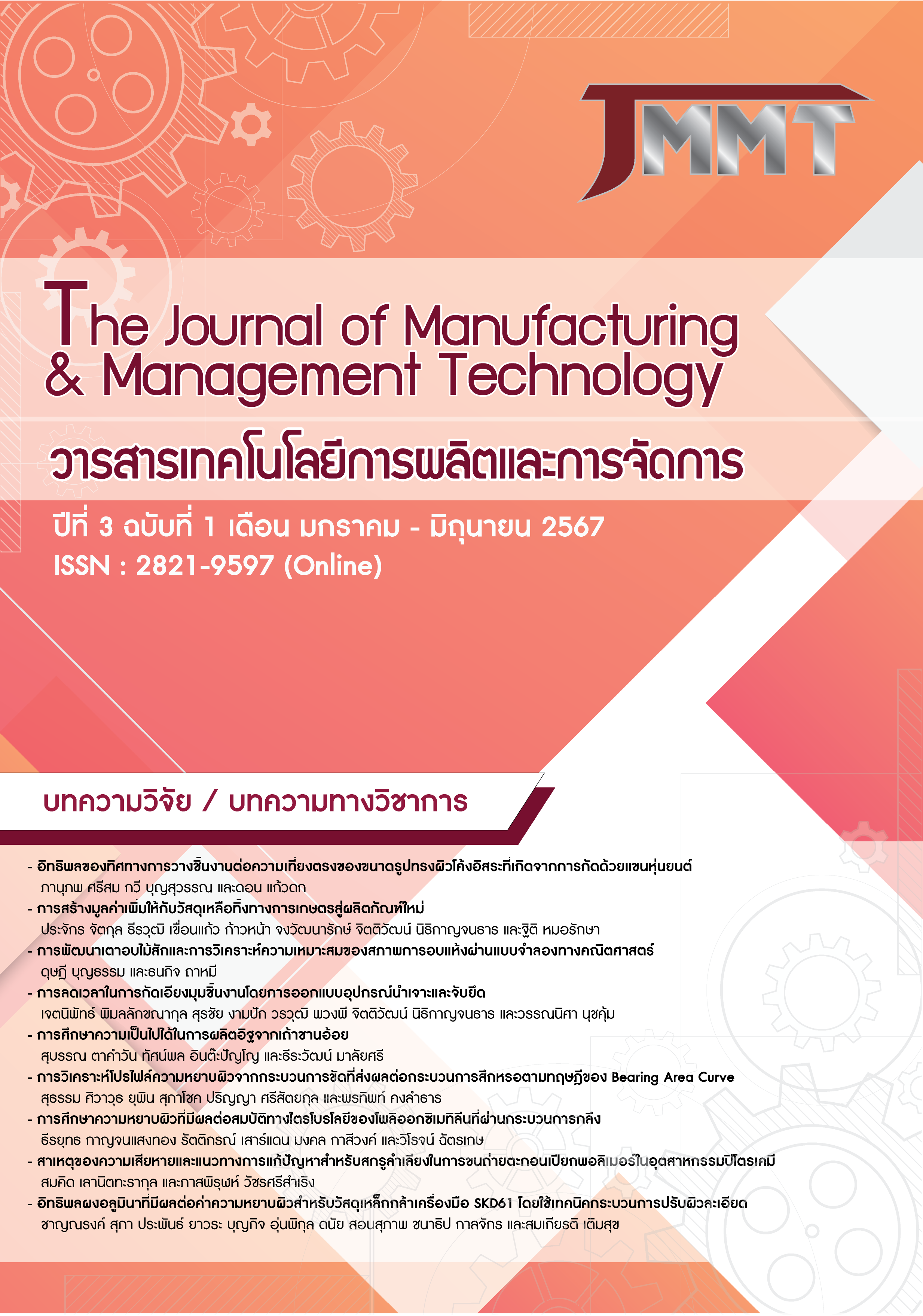การวิเคราะห์โปรไฟล์ความหยาบผิวจากกระบวนการขัดที่ส่งผลต่อกระบวนการสึกหรอ ตามทฤษฎีของ Bearing Area Curve
คำสำคัญ:
Bearing area curve, กระบวนการขัด, ความหยาบผิว , พฤติกรรมการสึกหรอบทคัดย่อ
บทความนี้นำเสนอการวิเคราะห์ลักษณะสัณฐานวิทยาของพื้นผิว และพารามิเตอร์ที่เป็นส่วนประกอบของกราฟ bearing area curve (BAC) ซึ่งประกอบไปด้วยพารามิเตอร์ reduced peak height (Rpk), core roughness depth (Rk), reduced valley depth (Rvk), material ratio 1at the peak zone (Mr1) และ material ratio 2 at the valley zone (Mr2) ควบคู่กับพารามิเตอร์ arithmetic mean deviation (Ra) ของเหล็กกล้าเกรด SKD61 ชุบแข็งด้วยระบบสุญญากาศมีความแข็ง 52–55 HRC และขัดผิวชิ้นงานด้วยกระบวนการขัด (Lapping process) ด้วยผงอลูมินาที่แตกต่างกัน 4 ขนาด ได้แก่ 0.05, 0.30, 1.00 และ 3.00 ไมโครเมตร ภายใต้สภาวะใช้น้ำหล่อเย็นแบบน้ำมัน กราฟ BAC ถูกนำมาใช้ในการวิเคราะห์เพื่อเป็นแนวทางการเลือกลักษณะพื้นผิวที่เหมาะสมสำหรับการต้านทานการสึกหรอ ผลลัพธ์จากการวิเคราะห์พบว่าเหล็กกล้าเกรด SKD61 ที่ขัดด้วยผงอลูมินาขนาด 0.30 ไมโครเมตร มีช่วงระยะ run–in สั้น และมีพื้นที่สัมผัสหลักขนาดใหญ่ (พารามิเตอร์ Rk ใหญ่) แรงกระทำต่อพื้นที่จึงมีค่าลดลง ส่งผลให้สามารถต้านทานการสึกหรอมากขึ้น
ดาวน์โหลด
เผยแพร่แล้ว
รูปแบบการอ้างอิง
ฉบับ
ประเภทบทความ
สัญญาอนุญาต
บทความ ข้อมูล เนื้อหา รูปภาพ ฯลฯ ที่ได้รับการเผยแพร่ในวารสารเทคโนโลยีการผลิตและการจัดการนี้ ถือเป็นลิขสิทธิ์ของวารสารเทคโนโลยีการ ผลิตและการจัดการหากบุคคลหรือหน่วยงานใดต้องการนำทั้งหมดหรือส่วนหนึ่งส่วนใดไปเผยแพร่ต่อหรือกระทำการใด ๆ จะต้องได้รับอนุญาตเป็น ลายลักษณ์อักษรจากวารสารเทคโนโลยีการผลิตและการจัดการก่อนเท่านั้น



